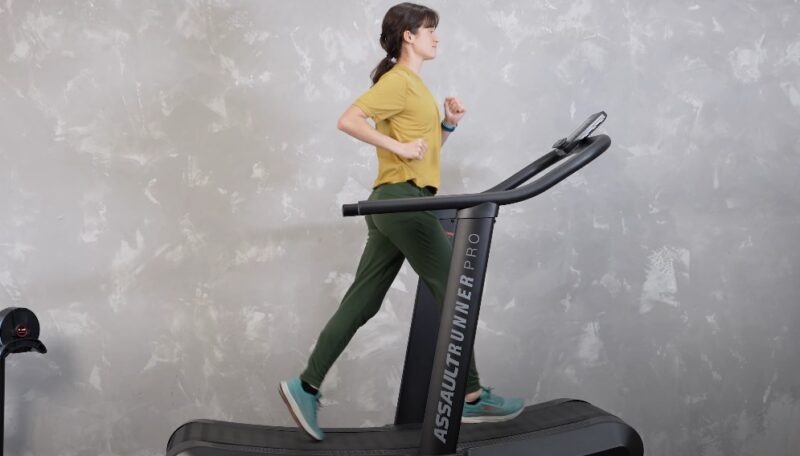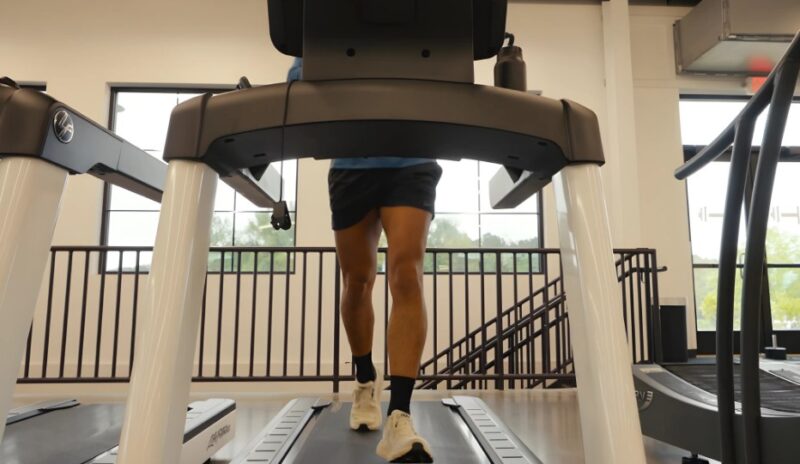As an outdoor runner, I’ve always craved the crisp morning air, the crunch of gravel underfoot, and the sense of adventure that comes with each step. Winter, however, can complicate things. Snow-covered trails and biting winds make it feel more like an endurance test than a liberating escape. That’s when the treadmill steps in, my dear friends.
At first, I resisted, I must admit. I labeled the treadmill as boring, uninspiring, even a “dreadmill.” But once I gave it a fair shot, I realized it’s actually a fantastic tool that offers unique benefits you can’t always get outside. Let’s explore how to make treadmill workouts exciting, purposeful, and a valuable part of your training routine.
Table of Contents
ToggleIdeas for Every Runner

Variety keeps things fresh, so besides experimenting with your gym shorts and T-Shirts, mix up your sessions based on your goals and mood. Here are a few of my favorite treadmill workouts:
1. The Hill Climber
| Phase | Duration | Intensity/Description |
| Warm-Up | 5 minutes | Easy pace; get your body ready for the workout. |
| Incline Build-Up | 5 minutes per cycle | Increase incline by 1% every minute; challenge yourself progressively. |
| Flat Surface Recovery | 5 minutes per cycle | Return to a flat surface; maintain a steady, moderate pace. |
| Repeat Cycles | 3–5 cycles | Alternate between incline and flat surface recovery. |
| Cool-Down | 5 minutes | Easy pace; allow your body to recover and your heart rate to normalize. |
2. Pyramid Intervals

| Phase | Duration | Intensity/Description |
| Warm-Up | 5–10 minutes | Easy pace; prepare your body for the workout. |
| Sprint-Jog Pyramid | Varies (see below) | Alternate sprinting and jogging with increasing intervals: |
| – Sprint | 30 seconds | High intensity sprint. |
| – Jog | 30 seconds | Recover at a light jog. |
| – Sprint | 1 minute | High intensity sprint. |
| – Jog | 1 minute | Recover at a light jog. |
| – Sprint | 90 seconds | High intensity sprint. |
| – Jog | 90 seconds | Recover at a light jog. |
| Descending Pyramid | Varies | Reverse the sequence (90s jog, 90s sprint, and so on). |
| Cool-Down | 5–10 minutes | Easy pace; allow your heart rate to return to normal. |
3. Tempo Training
| Phase | Duration | Intensity/Description |
| Warm-Up | 10 minutes | Easy pace; prepare your body for the workout. |
| Main Run | 20–30 minutes | “Comfortably hard” pace; steady effort where you can talk but not sing. |
| Cool-Down | 5–10 minutes | Easy pace; allow your heart rate to gradually return to normal. |
Why Outdoor Runners Should Embrace the Treadmill

We’re creatures of habit, and outdoor runners often stick to what feels natural. But treadmills bring some distinct advantages that might surprise you:
- Controlled Conditions: No icy patches, unpredictable winds, or temperature extremes to throw you off.
- Pace Consistency: Want to lock in a specific speed? Treadmills keep you accountable.
- Customizable Terrain: Inclines, declines, or flat routes—the choice is yours.
- Convenience: No need to layer up, dodge puddles, or brave the dark.
Rather than viewing it as a compromise, think of the treadmill as a tool to fine-tune your performance. Also, comparing different models of treadmills so you can choose the right one is as important as setting the right exercise routine.
How to Make Treadmill Runs More Engaging

I get it - the repetitive hum of the belt can feel monotonous. But there are simple ways to shake up your treadmill sessions and keep your mind engaged.
1. Create a Killer Playlist or Podcast Lineup
Music can be a game-changer for your energy levels, while podcasts keep your mind occupied during longer runs. Tailor your listening choices to your mood (upbeat tunes for intervals or thought-provoking discussions for steady-state runs).
2. Incorporate Intervals
Running at the same pace for miles can feel tedious, but intervals inject excitement into your workout. Try alternating between one minute of sprinting and two minutes of jogging. The constant change keeps you engaged and challenges your body in new ways.
3. Simulate Outdoor Routes
Many treadmills now offer virtual running experiences with screens displaying scenic routes. If your gym or home treadmill doesn’t have this feature, use your imagination! Picture your favorite trail, city streets, or even a marathon course as you adjust the incline and pace to match the terrain.
Tracking Progress and Staying Motivated

One thing I love about treadmills is how easy it is to measure progress. Many models display distance, pace, and calories burned in real-time, which means you’re never left guessing about your performance. Plus, tracking your metrics gives you a sense of accomplishment after every session.
Motivation can dip during indoor runs, but setting small, achievable goals helps keep you going. Break your long-term goals into manageable steps, like increasing speed by 0.1 mph or adding an extra minute to your run each session.
Aim to run a little farther, faster, or longer each week, and don’t be afraid to mix it up when boredom strikes. Reward yourself with a new playlist, fresh running gear, or even a post-run treat.
Tips for Beginners
Start Slow
Get a feel for the machine before diving into intense sessions. Begin with a pace that feels comfortable and manageable so you can focus on your form and breathing. As you gain confidence, experiment with slight speed increases to find your baseline. The goal is to ease into the experience without overwhelming your body or mind.
Incline is Key
A 1–2% incline mimics outdoor terrain and reduces the “bouncy” feel. It also helps engage different muscle groups, making the workout more effective and less repetitive. Gradually adjust the incline to challenge yourself without overstraining, and keep experimenting with small changes to stay engaged.
Proper Form Matters
Keep your posture upright, avoid gripping the handrails, and maintain a steady stride. Focus on relaxing your shoulders, engaging your core, and landing lightly to prevent unnecessary impact on your joints. Imagine running tall, with a slight forward lean, to keep your momentum smooth and natural.
Stay Hydrated
Indoor runs can feel warmer due to less airflow, so drink water regularly. Place a bottle within easy reach and sip at regular intervals, especially if your session is longer than 30 minutes. Dehydration can sneak up faster indoors, so listen to your body and adjust as needed to stay comfortable.
The Bottom Line
So, let’s redefine how we see the treadmill. It’s not a punishment for bad weather, it’s a playground for creativity and growth. The next time snowflakes start to fall, don’t let them keep you off your feet. Instead, lace up, step on the belt, and run with purpose.
Treadmill training is an opportunity to build a stronger, faster, and more resilient version of yourself. Incorporate varied workouts, stay motivated, and focus on technique, this way you’ll step into spring ready to conquer your favorite outdoor routes.
Related Posts:
- Top 400 Hilarious Gym Quotes to Keep You Motivated
- 25 Simple Running Motivation Tips To Get You Moving
- How Can You Start a Career as a Running Coach?
- 43 Inspirational Quotes for Men's Personal Growth -…
- How Far Is a Half Marathon? Everything You Need to Know
- 6 Best Running Playlists Music for Every Pace and Mood







